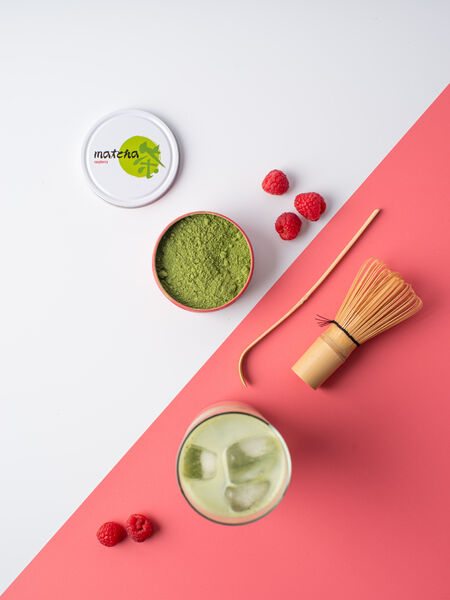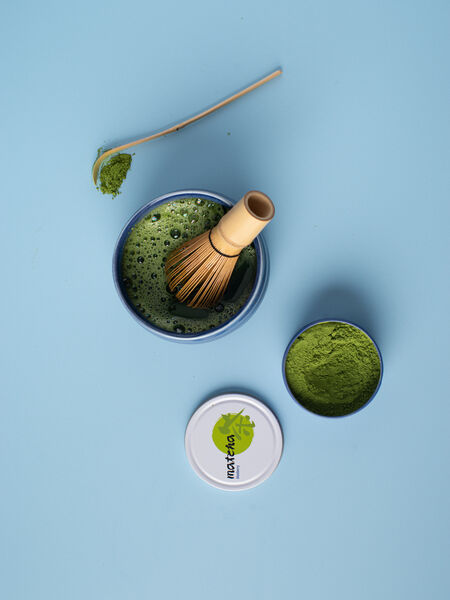Matcha Tea Guide: Origins, Farming, and Rituals


Who Invented Matcha?
Though Matcha is now often seen as traditionally Japanese, it was actually Chinese Zen monks who originally considered grinding dried green tea leaves into a powder and mixing it directly into water.
It didn’t take long for the original producers of Matcha to discover the benefits it held for the mind and body. Eisai is the Japanese Buddhist monk credited with bringing the Matcha tea ceremony to Japan. He not only imported green tea seeds from China, but wrote a book actively promoting the benefits of Matcha. Eisai was more concerned about the ways that Matcha could be used to help heal the body and keep it healthy. Legend has it that one of Eisai’s best pupils took his love of tea to heart and began to grow and process green tea himself, preparing and drinking it in Eisai’s preferred way known as, you guessed it, Matcha. Eisai said that tea was the “elixir of the immortals”, which is something we are sure many tea lovers worldwide agree with to this day.
On Cultivation
When it comes to Matcha, cultivation is just as important as the production process. The two, when combined together, create what can only be described as a fine art that can take a long time to master.
The growing of high quality flavorful Matcha revolves around two things, terroir aka the surrounding natural environment in the area it is being produced, the makeup of the soil, topography and also climate, and the slightest change in any of those things can have a huge effect.
Cultivar can also play a huge part in many aspects of Matcha including taste, color, texture and flavor and potency among other things. Over many years, farmers have learned which cultivars produce the best Matcha and as such only a select few are used. A very substantial amount of Japanese tea plants are grown from cuttings and not from seeds in order to try and avoid any genetic surprises, and try and keep the quality of the Matcha as consistent as possible. Though some farms do experiment with combining cultivars which results in some pretty interesting flavor profiles.
Tea plants take 5-8 years to grow to a point where they can be harvested. Some will harvest earlier, some will wait but it takes a long time for those tea plants to get to that optimal stage.
Let's talk about Shading
Shading usually begins in April when the first shoots of the seasons start to appear on the tea plants, the plants are shaded with bamboo mats, rice straw shades or thick black plastic sheets. Some farmers will stick to traditional methods but others are changing up their techniques and materials with the changing times. Shading usually goes on for around 3-4 weeks, The shading gradually gets rid of the sunlight that hits the plants and photosynthesis is halted. This process is what creates the increased levels of theanine, which is what gives Matcha its trademark mellowness, sweetness and savoriness.
The darker and longer the shading, the higher the grade of Matcha. The highest grade Matcha are kept almost in complete darkness up until it’s time to harvest which starts in May.
Onto Processing
After harvesting the following is the process that the leaves go through in order to create the final product of Matcha.
Namacha (raw tea) — steam & dry → Aracha (rough cut tea) — destem & devein → Tencha (final leaf product) — stone-grind → Matcha.
Each step of this process is pivotal and all combine together to create the trademark elements of Matcha that we all know and love.
As you can see the cultivation of Matcha from start to finish is rigorous and complex which is why it often has a higher price attached to it to make sure the people who are putting all of this hard work in are receiving a fair return. When it comes to Matcha quality you really do get what you pay for. Just be sure to also look for other quality indicators like texture color and aroma.
Matcha Preparation
There are a number of different ways that you can prepare Matcha.
If you want to stick to tradition you can prepare Matcha as Usucha (Thin tea) and we have a whole article on Koicha, or Thick Tea.
However when it comes to Usucha there's two different ways you can prepare that are specific to the two most popular japanese schools, Urasenke and Omotesenke. The first, Urasenke, being the one that most people are used to seeing focuses on creating a thick creamy froth atop the Matcha and the latter (Omotesenke) that moves away from the thought that good froth equals good matcha and should only be whisked until there is 50% froth. This leaves windows into the bowl below and is sometimes colloquially referred to as pond style Matcha. However, that is not a term that those within the Omotesenke school use themselves and is used by some as a nickname to describe that style of preparation as, the bowl and often take on the appearance of a pond. Learn more about these schools in blog post.
Matchas best suited to Koicha carry the character mukashi (昔) and Matcha best suited for Usucha carries the shiro (白) character.
Should you be looking to move outside of traditional preparation you’re in luck, because there are endless options when it comes to preparing Matcha simply because it is so incredibly versatile, you can use it to make a latte (hot or iced). You can prepare it iced with lemon for a refreshing summer treat, you can top it with lemonade, you could add it to cocktails/cocktails or you could add sparkling water to make a tea-pop. The options really are endless and limited only by one's creativity.
Outside of drinking Matcha, because of its powdered forms it is also very easy to incorporate into both sweet and savory recipes which you can find examples of over on Adagio's TeaChef.
Uji Matcha
There are a few regions within Japan that produce Matcha all with varying results, the most renowned of those regions with the most consistent results is without a shadow of a doubt Uji. If you want to experience that for yourself try out the spring harvest ceremonial grade Uji Matcha which is made using shade grown tea leaves that would usually be used to create Gyokuro. The resulting cup is sweet and vegetal, with hints of grass and a creamy finish.
